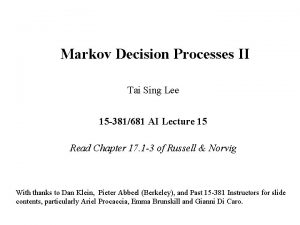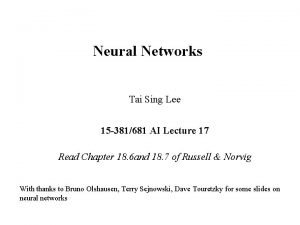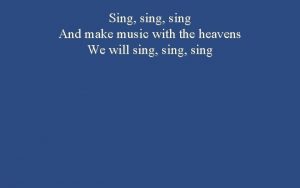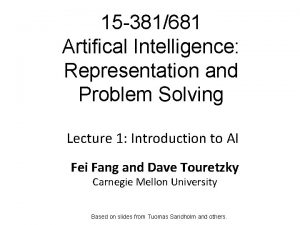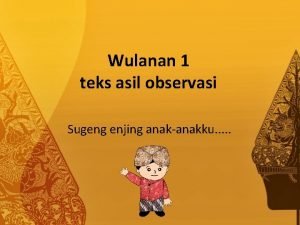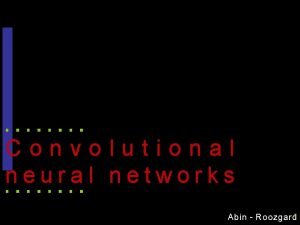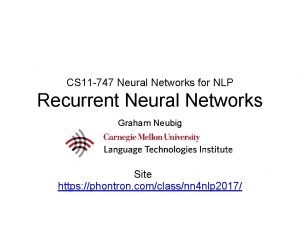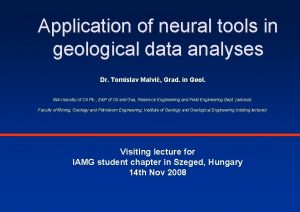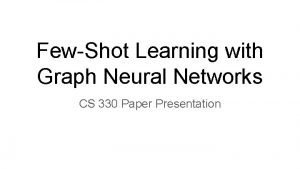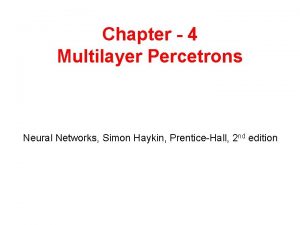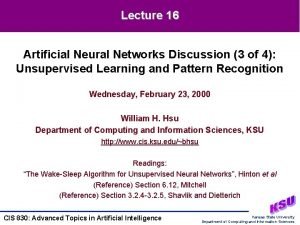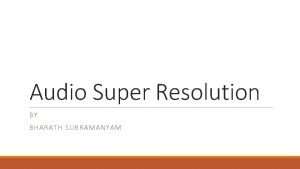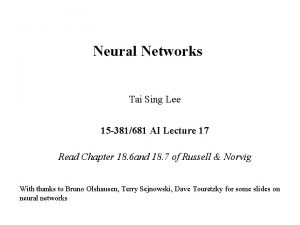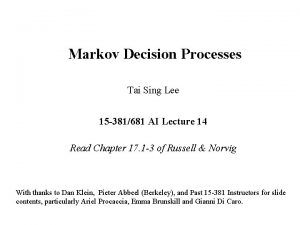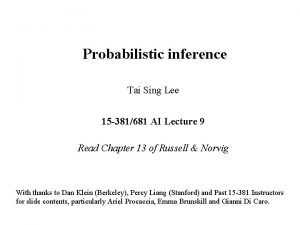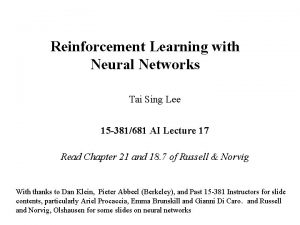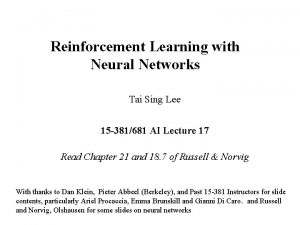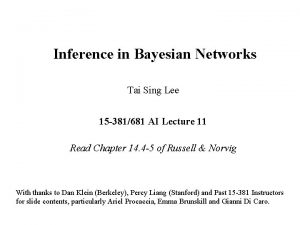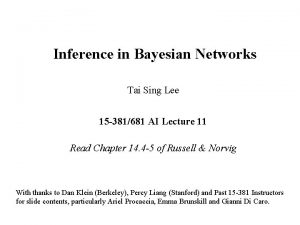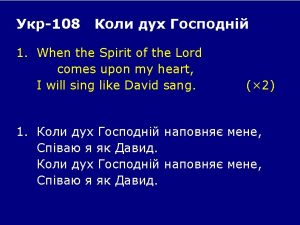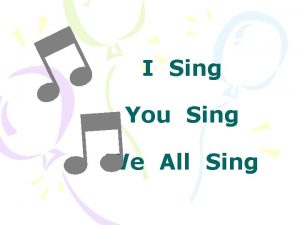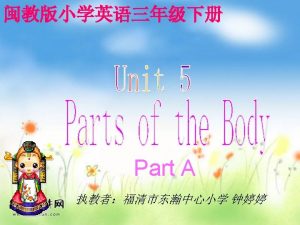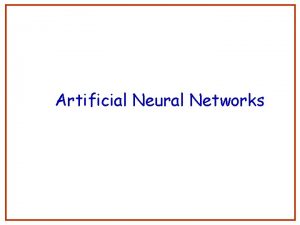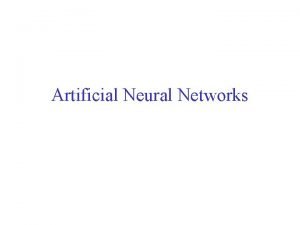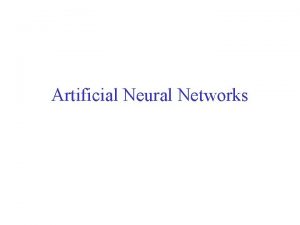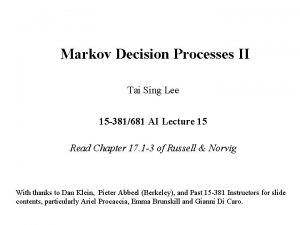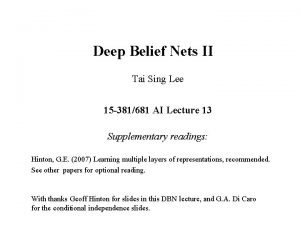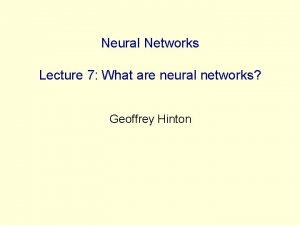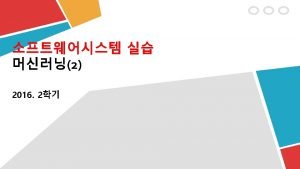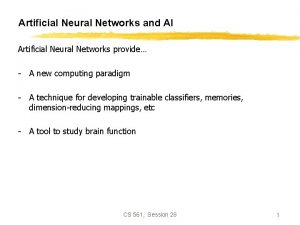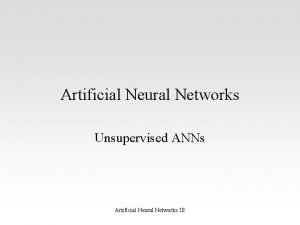Neural Networks Tai Sing Lee 15 381681 AI







![Threshold: Sigmoid function Notice σ(x) is always bounded between [0, 1] (a nice property) Threshold: Sigmoid function Notice σ(x) is always bounded between [0, 1] (a nice property)](https://slidetodoc.com/presentation_image_h/194f453012d3dab9f9e679752a4ab69c/image-8.jpg)
























- Slides: 32

Neural Networks Tai Sing Lee 15 -381/681 AI Lecture 17 Read Chapter 18. 6 and 18. 7 of Russell & Norvig With thanks to Bruno Olshausen, Terry Sejnowski, Dave Touretzky for some slides on neural networks

Alternative way to learn Q • • • Can learn Q(s, a) table explicitly using this approach. But there is a scaling-up problem (many S, and A). Use Neural Network to learn a mapping to Q – functional approximation. To flap or not to flap – that is the question.

Linear Classifier: The operation of a ‘neuron’, as a linear classifier, linear combination of features to discover a way to split the objects/actions into two classes depending on those features.

Neural Network: Mc. Culloch-Pitts neuron

Basic structure of a neuron

How to find the weights? Linear =

Output nonlinearity – making decision =
![Threshold Sigmoid function Notice σx is always bounded between 0 1 a nice property Threshold: Sigmoid function Notice σ(x) is always bounded between [0, 1] (a nice property)](https://slidetodoc.com/presentation_image_h/194f453012d3dab9f9e679752a4ab69c/image-8.jpg)
Threshold: Sigmoid function Notice σ(x) is always bounded between [0, 1] (a nice property) and as z increases σ(z) approaches 1, as z decreases σ(z) approaches 0

Single layer perceptron (1950 s) sigmoid neuron learning rule:

Single layer perceptron (1950 s) X-OR sigmoid neuron learning rule:

Two-layer (multi-layer) perceptron (80 s)

Learning rule for output layer

Backpropagation (1980 s) Learning rule for hidden layer

Still have a problem with many layers

There is a problem with many layers What is the problem? Solutions ?

How to learn to read aloud? Neural networks 26 80 203 18629 connection weights

Network design • Input: 7 groups of 29 units: each group represents a letter. 7 letters at one time in the time window. Pay attention only to the central letter, the surround serves as context. • The 29 units are used to indicate the 26 letters in the alphabet plus 3 units to encode punctuation and word boundaries. • The input text can move continuously letter by letter through the window. • Output: The desired output is the phoneme associated with the center letter. • 21 of the 26 output units represent articulatory features such as point of articulation, voicing, vowel height and so on. • 5 of the output units encode stress and syllable boundaries.




Network design • Hidden layer: map letters to phonemes. • Goal of the learning: search effectively the space of all possible weights for a network that performs such a mapping. • Training set: 1. Continuous speech of a first grade (1024 words) Reach 95% correct after 50 passes Learn distinction between vowels and consonants: babbling. Then learn word boundaries: resemble pseudo-words 10 passes: become intelligible.

Parallel and distributed Representations 1. Network robust against damage. 2. Relearning is faster than first-time learning. 3. Distributed or spaced practice more effective for longterm retention than massed practice.

ALVINN Autonomous land vehicle in a neural network Dean Pomerleau, Chuck Thorpe, Martial Hebert and others The Nav lab, the first generation of self-driving car Early 90 s, 95% hand-free across America.



Pomerleau and Touretzky

Flappy bird • Use Neural Network to learn a mapping to Q – functional approximation. Q(To flap, s) Q(Not to flap, s)

• Putting things together in Flappy Bird At each time step, given state s, select action a. Observe new state s’ and reward and look up expected utility. Q learning approximates maximum expected return for performing action a at state s based on Q state-action value function. Q action value function at state s is: How to get Q* ? From the same neural network

Neural network learns to associate every state with a Q(s, a) function. The flappy bird network has two Q nodes, “to flap” or “not to flap” – the stronger one will dictate the decision on action a. The network (with parameters θ) is trained by minimizing the following cost function: where yi is the target function to approach during each iteration (time step). Terminal state: Hit the pipe r = -1000

Do we need a model of our action? Eric’s question. Actually, we don’t, because once the bird makes a decision, the action will be executed (deterministically), and it will experience s’ and reward, and it can calculate y = R + max(Q) based on its actual experience. In fact, the bird will be learning in mini-batch mode. That is, it will execute a series of actions, and get a set of observations (experiences), and then it updates the neural network by experience replay, drawing random samples from these (s, a, s’ Q(s, a), r, max(Q(s’, a’)) that it has experienced in the last 1000 ms for example.

Experience replayed • Training is done with mini-batch • Gather the (s, a) in the last 1000 steps, randomly sample 200 steps to train. • Why? • Inspiration? Hippocampus experience replay in rodents.

• What reward “r” to choose? • When the bird moves to state s’, it observes the immediate reward you designed (r = positive if alive, r = somewhat negative if alive but in a bad region , r = very negative if crash into pipes), and finds max(Q(s’, a’) based on the current network learned. • It will use y = R + max(Q(s’, a’) as teaching signal to train the network by clamping y to the output node corresponding to the chosen.
 Value iteration
Value iteration Lee sing ai
Lee sing ai Sing sing sing and make music with the heavens
Sing sing sing and make music with the heavens Sing sing sing and make music with the heavens
Sing sing sing and make music with the heavens 381681
381681 Laporan asil observasi yaiku
Laporan asil observasi yaiku Sing to him sing praise to him
Sing to him sing praise to him Alternatives to convolutional neural networks
Alternatives to convolutional neural networks Fat shattering dimension
Fat shattering dimension Convolutional neural networks
Convolutional neural networks Convolutional neural networks
Convolutional neural networks 11-747 neural networks for nlp
11-747 neural networks for nlp Leon gatys
Leon gatys Neural networks and learning machines
Neural networks and learning machines Tlu neural networks
Tlu neural networks Pixel recurrent neural networks.
Pixel recurrent neural networks. Neural network ib psychology
Neural network ib psychology Neuraltools neural networks
Neuraltools neural networks Few shot learning with graph neural networks
Few shot learning with graph neural networks Perceptron xor
Perceptron xor Efficient processing of deep neural networks
Efficient processing of deep neural networks The wake-sleep algorithm for unsupervised neural networks
The wake-sleep algorithm for unsupervised neural networks Fuzzy logic lecture
Fuzzy logic lecture Matlab u-net
Matlab u-net Deep forest towards an alternative to deep neural networks
Deep forest towards an alternative to deep neural networks Audio super resolution using neural networks
Audio super resolution using neural networks Rnn andrew ng
Rnn andrew ng Sparse convolutional neural networks
Sparse convolutional neural networks Convolution neural network ppt
Convolution neural network ppt Audio super resolution using neural networks
Audio super resolution using neural networks Deep neural networks and mixed integer linear optimization
Deep neural networks and mixed integer linear optimization Introduction to convolutional neural networks
Introduction to convolutional neural networks Visualizing and understanding convolutional networks
Visualizing and understanding convolutional networks
